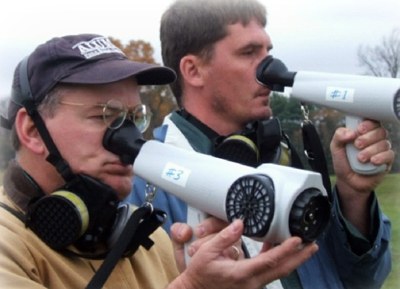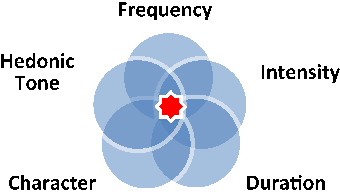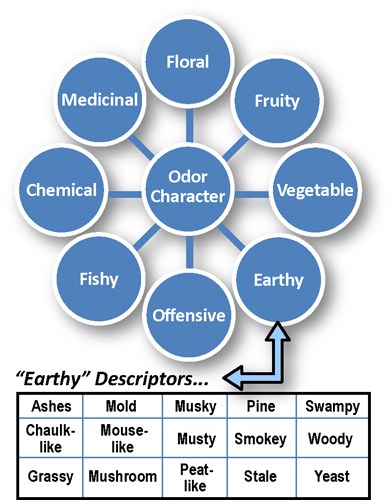The Odor Assessment Laboratory studies air emissions for the development of improved agricultural management strategies.

Two people using olfactometry equipment for odor assessment
Odors and Agriculture
- Agriculture is a key industry in Pennsylvania.
- Odors are an unavoidable consequence of animal agriculture.
- Rural population growth and expanding animal operations are increasing nuisance odor complaints.
- Agricultural odors are a complex mixture of many compounds (odorants).
- The human nose, the ultimate odor sensor, is capable of detecting thousands of odorants.
- Selected odor characteristics can be objectively quantified.
- International protocols assure that odor study results are reproducible.
- Odor mitigation practices can be used to reduce off-site nuisance situations.
- Odor research strives to assess the effectiveness of alternative odor mitigation practices.
The Penn State Odor Assessment Laboratory
- Adheres to rigorous international protocols for human odor panel testing.
- Specializes in human sensory methods to characterize and quantify odors.
- Employs state-of-the-art dynamic olfactometry equipment for odor panel assessment.
- Employs the only university-based forced-choice dynamic olfactometer in the Mid-Atlantic region dedicated to the study of agricultural odors.
- Employs portable olfactometry equipment for field odor measurements.
- Uses a variety of laboratory-based and field gas collection techniques.
- Offers supplimental gas measurement methods for quantification of ammonia and greenhouse gas emissions.
Nuisance Odor Factors
 Frequency
Frequency- Intensity
- Duration
- Character
- Hedonic Tone
Environmental odors are characterized using the Odor Character Description Wheel.
Odor Character
- Floral
- Fruity
- Vegetable
- Offensive
- Fishy
- Chemical
- Medicinal
- Earthy
"Earthy" Descriptors
An "earthy" odor character has the following descriptors.
- Ashes
- Chaulk-like
- Grassy
- Mold
- Mouse-like
- Mushroom
- Musky
- Musty
- Peat-like
- Pine
- Smokey
- Stale
- Swampy
- Woody
- Yeast
Olfactometry: Use of the human sense of smell to characterize and quatify odors.
Human Sensory Thresholds
Detection: observer can sense a difference in the air environment… air is different from odorless control.
Recognition: observer can assign a descriptive term to odor.
Olfactometer - Air Dilution Concept
Mixing of carbon-filtered air with odorous air.

PDF document, 967.9 KB
This document summarizes, in an easy-to-read format, current information on odor management for agricultural and food processing operations.

